Historic background and regional context of Trump’s proposal.
Historic background and regional context of Trump’s proposal.
By Islam Farag, Cairo / Egypt
US President Donald Trump’s proposal to temporarily relocate Palestinians from the Gaza Strip to Egypt, pending the reconstruction of the sector, was merely a revealing attempt of Israel’s intentions and its desire to get rid of the original landowners, coveting their land and removing a security burden from its shoulders by exporting it to others.
This proposal is but a new episode in a long series of attempts to displace Palestinians from their lands, which began in 1948.
A new episode
This Israeli endeavor has not stopped since that year, known as the Nakba year, which witnessed a forced displacement of Palestinians from their lands. In 1953, what became known as the “Sinai Plan” came to light, which aimed to displace them to the Egyptian peninsula. The 1950s also witnessed similar projects such as the Eric Johnson Project to resettle Palestinian refugees in several Arab countries such as Syria, Lebanon, Iraq and Egypt.
In 1967, Israeli politician Yigal Allon proposed a plan for a regional settlement aimed at deporting Palestinians to Jordan and Egypt. In 1970, Ariel Sharon, commander of the Southern Region of the Israeli army and later prime minister of the Hebrew state, tried to empty the Gaza Strip of its inhabitants and transfer them to Sinai, which was under Israeli occupation at the time, but he did not succeed in this endeavor.
In 2000, Israeli military man Giora Eiland suggested that Cairo make concessions on lands in Sinai in favor of establishing a Palestinian state in exchange for privileges that Egypt would receive. During Trump’s first term, what is known as “the deal of the century” was promoted in the media, which referred to an American plan to displace Palestinians from their lands.
Repeated rejection
Although the idea has had a recurring historical presence, it also faces repeated rejection. But the context in which it is raised this time is more worrying than ever before and opens matters to possibilities and widespread pressures, which requires seriousness in rejection and readiness for all scenarios.
This is the first time that the idea has been put forward officially and on the tongue of the American president himself. The timing also coincides with a truce for the war between Israel and the Islamic Resistance Movement (Hamas), which lasted for more than a year and made the Gaza Strip an unlivable place. According to Trump himself, Gaza has turned into a site of great destruction, which is the pretext used to transfer Palestinians to Egypt and Jordan temporarily until the reconstruction process is completed.
Some may believe that is logical and represents a humanitarian attempt to spare these defenseless civilians a harsh life for a long period that the reconstruction process may take. But as the Arabs say, a believer is not stung twice from the same hole.
This is what Egyptian President Abdel Fattah El-Sisi meant in his response to this argument that the Palestinians were promised that before, in the Nakba years, when they were displaced from their lands.
Without going into many details, the Palestinians are still struggling after more than 70 years for the right of return, which Israel has been trying to evade in all peace negotiations over the past decades.
Egypt’s rejection of the proposals to displace Palestinians stemmed from its desire not to eliminate the just cause of this oppressed Arab people, but also from strong national security considerations.
Lessons from history
Historically, Israel’s invasion of Palestinian territories has caused large waves of Palestinians as refugees in Jordan, Syria and Lebanon, transforming those countries into a platform of resistance against the Israeli occupation.
From Jordan, after the 1967 war, Palestinian Resistance escalated attacks against the occupation, which prompted a retaliatory response to a camp of the Palestine Liberation Organization in the Jordanian town of Karameh. With the victory of the resistance in that battle, its influence within Jordan grew to the point of publicly demanding in 1970 the overthrow of the Hashemite monarchy, disregarding local laws and regulations and engaging in the hijacking of civilian aircraft.
This situation led to the entry of the Jordanian armed forces into a confrontation with the organization in what became known as the Jordanian civil war or “Black September”, which ended with the victory of the Jordanian army and the departure of the resistance to Lebanon.
Lebanon’s disaster was even greater. In 1969, the Lebanese Army and Palestinian militants fought in a battle that led to the Cairo Agreement, which legitimized PLO elements with political presence and armed action against Israel, but at the same time caused considerable opposition as contradictory to Lebanon’s sovereignty. With a series of assassinations culminating in the attempted assassination of President Pierre Gemayel, Lebanon’s civil war broke out.
This situation resulted in the entry of Syrian forces at the behest of the United States to prevent the country from sliding into further division, and Israel established a 10-kilometer security belt to protect its north from Palestinian attacks.
In the summer of 1982, following a failed attempt to assassinate its ambassador to London, Shlomo Argov, by Palestinian resistance militants, Tel Aviv carried out a vicious attack on Beirut and southern Lebanon to eliminate the Liberation Organization’s infrastructure there. It did not agree to lift its siege of this small country until the organization left Lebanon.
In light of these two models, the Egyptian decision-maker can never allow Egyptian lands to turn into a platform for Palestinian resistance against the Israeli occupation, especially since this clearly means dragging Egypt into the war through retaliatory Israeli reactions that affect its lands. This position was expressed by the Egyptian president earlier by warning of the repercussions of displacing Palestinians to Egypt.
“Transferring Palestinians from Gaza to Sinai means transferring the idea of resistance and fighting from the Strip to Sinai, which could make it a base for operations against Israel, which would then have the right to defend itself and direct strikes at Egyptian territory”, he said.
“Egypt is a great country that has been sincerely keen on peace, so this great investment in peace should not be squandered for an unworkable idea,” he added.
Reconstruction or Land Grab?
But even if we accept, for the sake of argument, the claims that the transfer is temporary until the reconstruction process is completed, why is the problem being exported to neighboring Arab countries?
The Palestinians are more worthy of their land. If there is a need to transfer the Palestinians, why not to the Negev desert, which is part of the historical Palestinian territories and which was the subject of negotiation in the efforts to reach a two-state solution that the international community adopted decades ago?
When Israel launched its military operation on the Gaza Strip following the Al-Aqsa Flood operation carried out by the resistance against the Hebrew state, its retaliation was so comprehensive that it seemed that Tel Aviv was forcing Palestinian civilians to flee towards Egyptian territory. At that time, demands were raised for Egypt to open the borders to save these civilians. The Egyptian president expressed his position rejecting those demands.
“If there is an idea of displacement, there is the Negev desert in Israel, where Palestinians can be transferred until Israel finishes its declared mission of eliminating the resistance and armed groups, and then return them if it wants!”
“As for transferring them to Sinai, it means that the military operation will continue for years under the pretext that it has not ended yet, and Sinai will turn into a base for terrorist operations against Israel, which may lead to the disappearance of the peace that we have worked on,” he added.
The core idea is that the displacement of the Palestinians is an old Israeli dream to have exclusive control over the remaining Palestinian territories and to put an end to any talk of a two-state solution. If the pretext this time is reconstruction, then why does the proposal extend to emptying the West Bank of its inhabitants and displacing them to Jordan?
The danger of this proposal this time, as we mentioned, comes from the context. The matter does not stop at the one who made the proposal, nor the collapse of all means of life in the Gaza Strip, but it also extends to international plans to redraw the lines of international transport and trade. It can be said that displacement, which represents a polite term for ethnic cleansing, is nothing more than an idea for international parties whose goals converge with it with the Israeli goals of getting rid of the indigenous population.
A Plan with Business Objectives
We can discern from the statements of the American president the intended intentions of reconstruction, which stipulates the displacement of the Palestinians, even temporarily, as he claims. When Trump, a businessman in the real estate field, was asked to comment on the possibility of contributing to the reconstruction of Gaza, he said that he might participate in that, and spoke of Gaza’s unique location on the sea and its wonderful weather, which means that the president, in his comment, is looking at the potential commercial value of the sector and what enhances the Israeli economy, not rebuilding the Palestinian communities on their land.
According to Al-Shark Al-Awsat newspaper, the meetings held by Trump’s envoy in Israel, Steve Witkoff, revealed that among the goals of the reconstruction plan is to encourage groups of Palestinians in Gaza to move to live and work in other Arab and Islamic countries.
The plan relies on the Chinese method of building high-rise buildings of about 50 floors, to give a suitable housing apartment to those who insist on staying in the strip in exchange for giving up the right of return to their original villages from which they were displaced in 1948, and agreeing to work in agriculture, tourism or high technology fields. It also includes establishing a group of modern hotels on the beach, while the tunnels of “Hamas” are converted into tunnels of a railway line for a network of trains, which may extend to Egypt, Saudi Arabia, Jordan and the West Bank.
Among the international projects that might see the depopulation of the strip as an attractive opportunity is the India-Europe economic corridor project that runs through the Middle East, which could compete with China’s Belt and Road Initiative.
The Biden administration praised the project as a major diplomatic and commercial achievement, but the October 7 attack on Israel and the subsequent regional conflict weakened the talk about it. But with Trump’s return to the White House, the project is expected to get a shot of oxygen that will revive it, only if the American president succeeds in addressing the security challenges facing it in the region.
The project is an eastern maritime corridor that connects India and the Arabian Peninsula, a railway project designed to connect all six Gulf Cooperation Council countries, and a northern maritime corridor that connects the Arabian Peninsula to Europe via Jordan and Israel. At the same time, the project will stimulate continued investment in undersea data cables and future energy projects such as green hydrogen pipelines and electricity connectors.
However, the project is of concern to three major States in the region as exceeding or threatening their interests, namely, Turkey, Iran and Egypt. For the latter, it feared that the corridor would move businesses away from the Suez Canal, a crucial source of revenue for a country with limited foreign investment opportunities and an increasingly unstable economy.
Despite the war on Gaza, the commercial and economic gains it offers to its parties are still tempting, provided that the security problems of the project are addressed, the most prominent of which is the threat that Israel faces from the resistance. Therefore, evacuating the Strip of its residents represents a solution that accelerates the implementation of the project.
Egypt’s dilemma
So, the plans are ambitious and receive support from Washington and the beneficiaries are many, so can Egypt, as one of the most prominent countries proposed to receive these displaced people, resist the pressure it may face to pass these plans.
Some believe that Egypt, as an economically crippling country, receives military aid from Washington and needs sustained loans from the International Monetary Fund (IMF), may bow to these pressures despite all its rejections. They are based on their view that Trump as a deal man succeeded in pressuring Cairo before following his election victory in 2016, when he forced it to withdraw a Security Council draft resolution condemning Israel’s continued settlement in the West Bank.
Others believe that Cairo is forced to confront all the pressures in this matter due to the danger of displacing the Palestinians to the extent that it may threaten the structure of the regime itself. In their view, Cairo is intensifying its military presence in the Sinai Peninsula at unprecedented levels, perhaps in violation of the provisions of the Camp David Accords, in preparation for any attempt by Israel to forcibly displace the Palestinians to it.
Whatever the coming days may bring, it is clear that Egypt’s options are all difficult and put it to the test, especially since the goal of displacement is no longer political and an Israeli goal only.
The statements made by the American president in the joint press conference with the Israeli Prime Minister Benjamin Netanyahu clearly reveal imperialist intentions coveting the place. Trump spoke clearly about an American plan to control or own Gaza for a long time and take over the reconstruction of the strip to turn it into resorts. These details do not reveal an Israeli project as much as it is a project of global capitalism allied with Zionism and the American right.




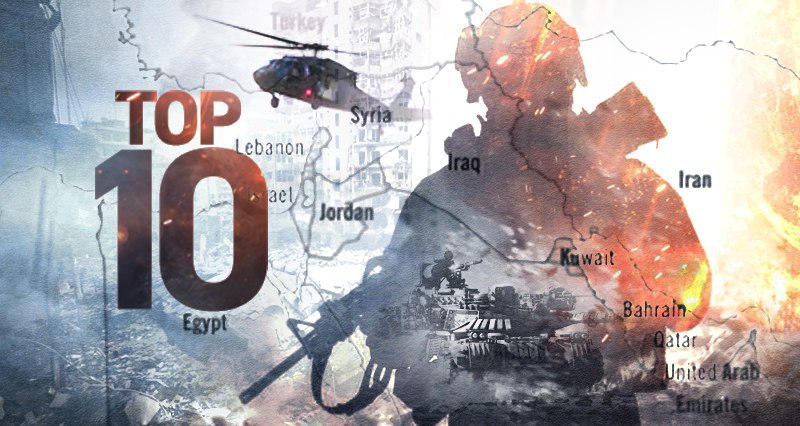




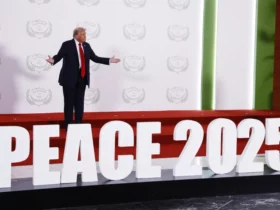




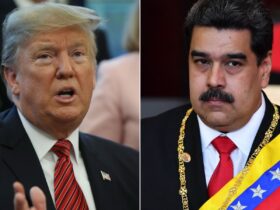
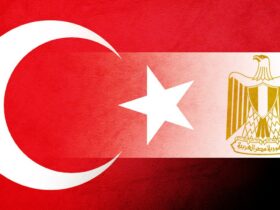
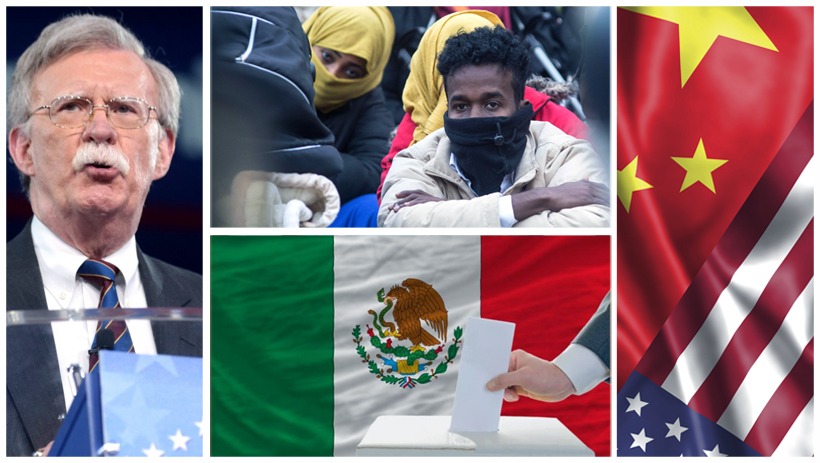
Leave a Reply